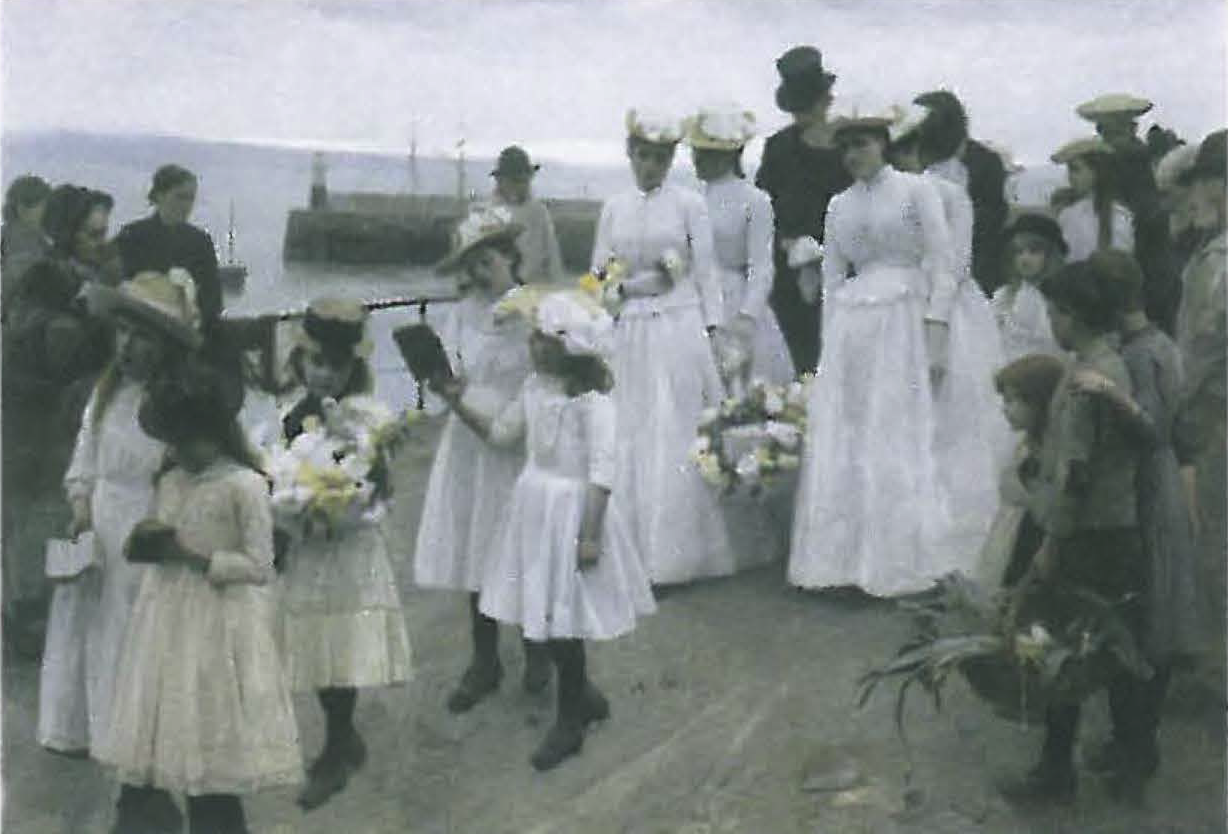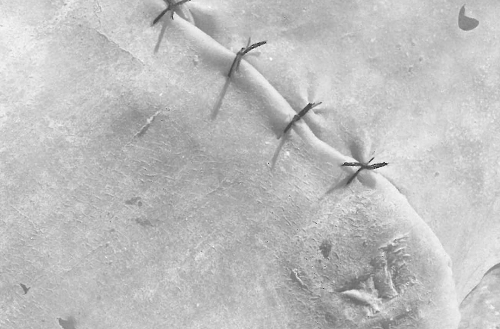
Evocations of love and death are on grand display in the Art Gallery of South Australia for this stunning exhibition curated by the meticulous and talented Angus Trumble.
On entering we are alerted almost immediately to the disparity between the standard images of Victorian England - colourless and curmudgeonly - and the sumptuousness, beauty and transcendent quality of these works by some of the most important artists of nineteenth century Britain. Indeed, beauty was one of the stated ideals of the Pre-Raphaelite Brotherhood who sought also, in their early days at least, to question a number of the prevailing values of their time. Their artistic calling fulfilled a social function that included elevating and educating their public.
Evicted, The pinch of poverty, The immigrants' ship and "Blow, blow thou winter wind" recall eloquently- if romantically - aspects of the grim reality of life for the majority of people for much of the reign of Queen Victoria. But the lasting impression of this exhibition is of an altogether different life, one of the mind and imagination. Of the subjects taken from the period, the vast canvas of a child's funeral procession, For of such is the kingdom of heaven, alone, is as dramatically engaging as those paintings drawing on historical, literary or biblical themes.
At the very moment when progress was being idealised in the works of artists across the channel, the English avant-garde sought a kind of regulated harmony allowing for a co-existence of elements from the past and the present in order to preserve what was deemed best for the future. This seeming conservatism probably heralded a kind of modern conservationism until it became, as some scholars argue, commodified and lost its critical ideological edge. Equally, the (eventually fetishistic) search for the quintessentially 'English', in the past and in nature, was appropriated by the nation builders who vulgarised the artists' vision for narrowly political ends.

The heroic, the tragic and the inspirational were found both in English history (at times mythologised) and in the shared classical and religious heritage of Europe. Thus a manacled Queen Zenobia, elegantly clad even in defeat, watches over her conquered city, Palmyra, before being taken off to Rome by her captors. Frederic Leighton's Syracusan bride is accompanied in procession by garlanded and affectionate wild cats and a cast of richly draped beauties. From William Blake Richmond's The Song of Miriam, one of the largest and most captivating paintings in the exhibition, we note that for some the flight through the parted waters of the Red Sea was difficult. Still, a muscular Moses, arms outstretched, faces his people who, equally splendid in flowing robes and with all manner of instruments in hand, luxuriate in the glorious triumph.
Love and Death invites reflection on the different functions of the great and enduring public institutions, including art galleries, that were products of the Victorian era itself. Exhibitions like this one enjoin us to consider the complex patterns of the relationships established between people, their history and their governing institutions in a culture which shaped our own. Take as a case in point the following paradox. The paintings present us with an array of women: mothers, wives, daughters, queens, lovers and goddesses. Some are brow beaten, others knowingly resplendent. Regardless, the feminine form prevails. Yet the work of the sole female artist represented in the exhibition, Elisabeth Thompson's The 28th Regiment at Quatre Bras, is one of only six in which there are no female images and portrays the single depiction of a modern battle scene.
Love and Death succeeds on many levels. As the catalogue and the explanatory texts alongside the exhibits attest, Angus Trumble has brought to bear his intellectual rigour, passion and wit in curating this major exhibition. There is nothing conventional about it. According to Gallery Director, Ron Radford, this exhibition appropriately draws to a close the year in which we celebrated the centenary of Federation. Australian collectors of the time and subsequently (as the numerous paintings from the private collection of John and Julie Schaeffer indicate) embraced with enthusiasm the new art and some of the values enshrined therein. Furthermore, Victorian art, often overshadowed by the champions of the more aggressively modern, has been reevaluated in the light of scholarship on the influence of class, taste, patterns of collecting, markets and dealers on the avant-garde. This, combined with the sheer beauty and grandeur of much of the painting, is more than ample justification for the effort expended.












